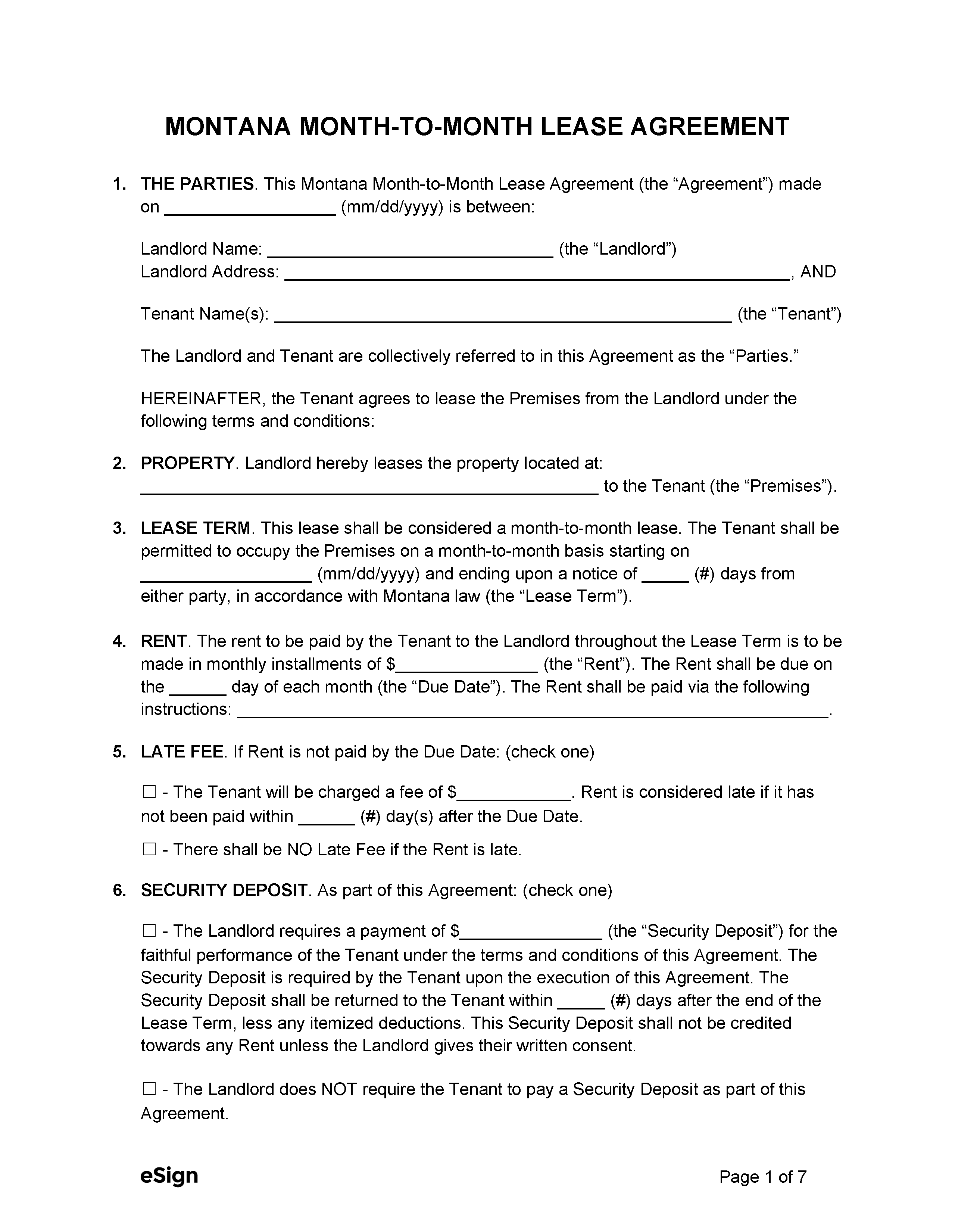Montana Month-to-Month Lease Agreement
Last updated November 3rd, 2025
A Montana month-to-month lease agreement establishes a rental arrangement where a landlord allows a tenant to occupy a residential space on a month-by-month basis. This type of lease is open-ended, meaning the tenancy will continue until either party terminates. While a monthly contract is more temporary, the agreement itself contains provisions similar to a standard lease.
Rental Application – This form allows landlords to review applicant’s employment/rental history and perform background checks to determine eligibility for tenancy.
Month-to-Month Lease Laws
- Termination Notice – Both landlords and tenants must give the other party 30 days’ notice to end a monthly lease agreement.[1]
- Rent Increase Notice – Rent can be increased on monthly tenancies as long as the landlord provides the tenant 15 days’ notice.[2]
Required Disclosures (5)
- Lead-Based Paint Disclosure (PDF) – Tenants renting property built prior to 1978 must receive this disclosure that informs them that lead-based paint may be present on the premises.[3]
- Methamphetamine Disclosure (PDF) – Landlords renting property that was previously used to produce methamphetamine and that wasn’t cleaned to the state standards must disclose this information to tenants.[4]
- Mold Disclosure (PDF) – Landlords must provide a mold disclosure form to tenants in any residential lease agreement.[5]
- Names and Addresses – Tenants must be given the name and address of the property manager as well as the owner and their authorized representatives.[6]
- Statement of Condition (PDF) – When a security deposit is required, the landlord shall deliver a statement of condition to the tenant which outlines any issues on the premises.[7]

